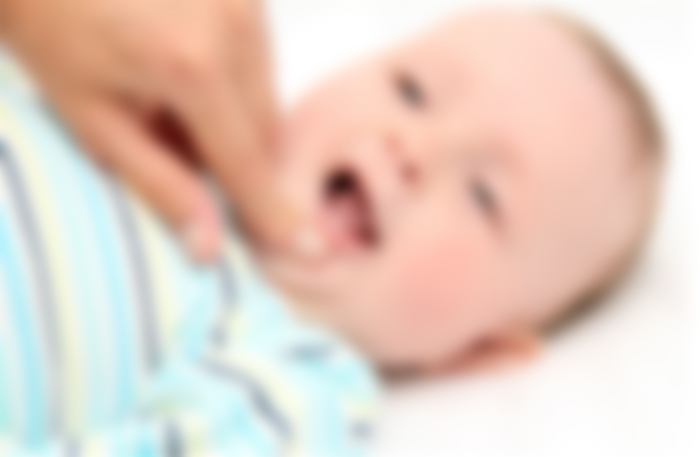“Is he sick? No, his teeth are bothering him, ”complain mothers, who are put in distress by their child's painful teething.
The oversized smile of a toddler with the first milk tooth or two leaves no one indifferent. But the period of teething is painful and painful for the child, and exhausting for the parents, because usually a barely well-established sleep rhythm breaks down quickly, and the baby usually needs more tenderness and attention. So how do you help a toddler with the pain caused by the eruption of the first teeth?
Look, first teeth!
We are very happy when a white bulge appears on the baby's gums, which testifies to the eruption of the first baby tooth. This is usually the lower incisor, or the lower deciduous one, which will be joined by another 19 deciduous teeth in the coming months and years.
Each child is a world unto itself, so the time when small mouths are filled with the first teeth is difficult to pinpoint. In general, however, the first teeth erupt between the fourth month and the second year of age, possibly sooner or later. The design for deciduous teeth develops during pregnancy.
The eruption of baby teeth is a kind of milestone in a child's development, as the growth of teeth allows the child to chew and speak correctly. The role of the first teeth in the proper development of the child's jaw and permanent teeth is also important.

How do teeth grow?
The anterior lower incisors usually grow first, followed by the lower bifurcations in the following months, the first lower cheekbones around the 15th month, the lower lower eyelids approximately between the 17th and 23rd month, and the second lower cheekbones around the first year of the child's age.
As a rule, all pairs of deciduous teeth appear first on the lower jaw and only later on the upper jaw. A completely different sequence of teething is also completely normal. Milk teeth begin to be gradually replaced by permanent ones around the age of five, and by the age of 12, all baby teeth will most likely be safely stored at the tooth mouse.
Signs that teeth are coming “Is he sick? No, his teeth are bothering him, ”complain mothers, who are put in distress by their child's painful teething. The arrival of baby teeth can be uncomfortable and painful for the child, so they are more often crying, moody and more demanding. Signs that predict the eruption of the first teeth are: crying unrest, more pronounced salivation, biting everything that comes to hand for a toddler red and swollen gums, you may also have a rash on your facial skin and slightly elevated body temperature. Therefore, the eruption of baby teeth can be a great challenge for parents as well, as babies sleep less, need more attention, tenderness and care, and breastfeeding can become uncomfortable for the mother due to the first teeth.
Relieving pain when teething When the first teeth break through the baby’s gums, the tissues are damaged and the gums swell, which is accompanied by more pronounced salivation and painful gums. You can relieve the baby's pain with slightly cooled rubber bites and massage the affected area, paying attention to hand hygiene. Dentists also advise biting harder fruits or vegetables and using various ointments to soothe inflamed or damaged gums. The experience of mothers shows that we can take away a lot of pain and discomfort from a child by using First Teeth Gel. First Teeth Gel provides immediate relief of pain when teeth erupt, as:
-improves gum flexibility when teeth erupt, -reduces swelling -and promotes gum healing.
Its main ingredient is hyaluronic acid, which is a natural component of our gums. It has a pleasant taste and has no side effects if consumed by toddlers. It does not contain alcohol, sugar, artificial flavors, lactose, parabens, sodium lauryl sulfate and genetically modified organisms. Gengigel First Teeth is therefore completely safe, as it can be used to facilitate the eruption of the first teeth without any worries.
The gel is also suitable for inflamed and bleeding gums, to relieve problems caused by sores and ulcers (aphthae) in the mouth and in the period around the fifth year of a child's age, when deciduous teeth begin to fall out and the child's gums can be damaged again.
Photos are taken from google.com.
Thank you for reading my article.

I send you hugs and much love.@Purebeauty.


These seem like the recommendations of pediatricians. Good to read all these reminds me of my beginnings as a medical student. Nice article dear.